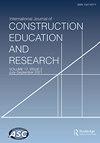地震带中的土制建筑:拉丁美洲和太平洋火带
Q1 Social Sciences
International Journal of Construction Education and Research
Pub Date : 2021-09-24
DOI:10.30564/JCR.V3I1.3263
引用次数: 0
摘要
本文分析了位于环太平洋火山带的国家的土建现状。在拉丁美洲,哥伦比亚、厄瓜多尔、秘鲁、玻利维亚、智利和阿根廷等国位于环太平洋地震带,受到强烈地震的影响,使土质建筑更加脆弱。从对每个国家住房普查的分析中可以看出,目前土制建筑仍然是一种建筑选择,土制建筑的百分比因国而异,在住房中所占的百分比很高;其中,哥伦比亚5.3%(714.478套),厄瓜多尔8%(383.086套),秘鲁31%(2.390.625套),玻利维亚37%(1.037.473套),智利2%(121.756套),阿根廷1.9%(230.185套)。秘鲁尽管是地震风险最高的国家之一,但却是土制住宅数量最多的国家。结论是,在所有分析的国家中,土制建筑盛行,采用不同的建筑技术,其特点深深植根于每个国家的祖先文化。这凸显了在地震事件发生后,有适当的法规和熟练的工人进行正确干预和修复结构的重要性。本文章由计算机程序翻译,如有差异,请以英文原文为准。
Earthen Architecture in Seismic Zones: Latin America and the Pacific Fire Belt
This paper analyzes the current state of earthen constructions in countries located in the Pacific Ring of Fire. In Latin America, countries such as Colombia, Ecuador, Peru, Bolivia, Chile and Argentina are located in the Pacific Ring of Fire and are subject to strong seismic exposure, making earthen constructions more vulnerable. From an analysis of the housing censuses of each country, it was observed that currently, earthen construction continues to be a construction option, that the percentage of earthen constructions varies from country to country, and that they make up a high percentage of dwellings; namely, in Colombia 5.3% (714.478 houses), Ecuador 8% (383.086), Peru 31% (2.390.625), Bolivia 37% (1.037.473), Chile 2% (121.756) and 1.9% in Argentina (230.185 houses). Peru, despite being one of the countries with the highest seismic risk, is the country with the highest number of earthen dwellings. It was concluded that in all the countries analyzed, earthen architecture prevails, employing different construction techniques whose characteristics are deeply rooted in each country’s ancestral culture. This highlights the importance of having regulations in place and skilled workers in order to intervene correctly and repair the structures after a seismic event.
求助全文
通过发布文献求助,成功后即可免费获取论文全文。
去求助
来源期刊

International Journal of Construction Education and Research
Social Sciences-Education
CiteScore
3.80
自引率
0.00%
发文量
19
期刊介绍:
The International Journal of Construction Education and Research is a respected international refereed journal that publishes original works that address cutting edge issues related to construction around the globe. The Journal supports the mission of the Associated Schools of Construction (ASC), a professional association comprised of about 100 universities and colleges. The ASC encourages the sharing of ideas and knowledge and promotes excellence in curricula, teaching, research and service relating to the construction industry.
 求助内容:
求助内容: 应助结果提醒方式:
应助结果提醒方式:


